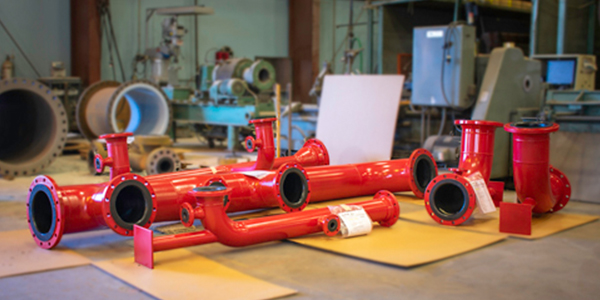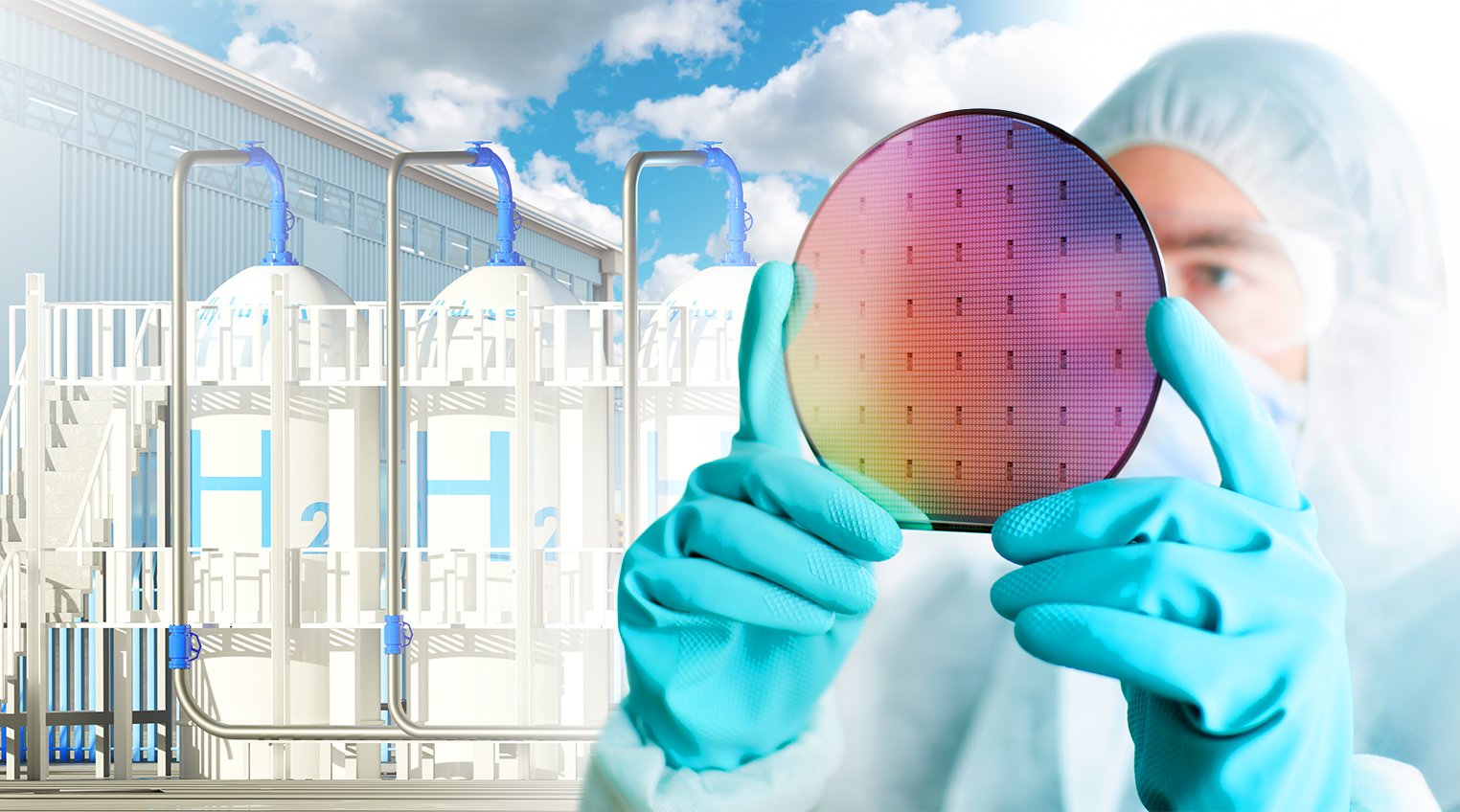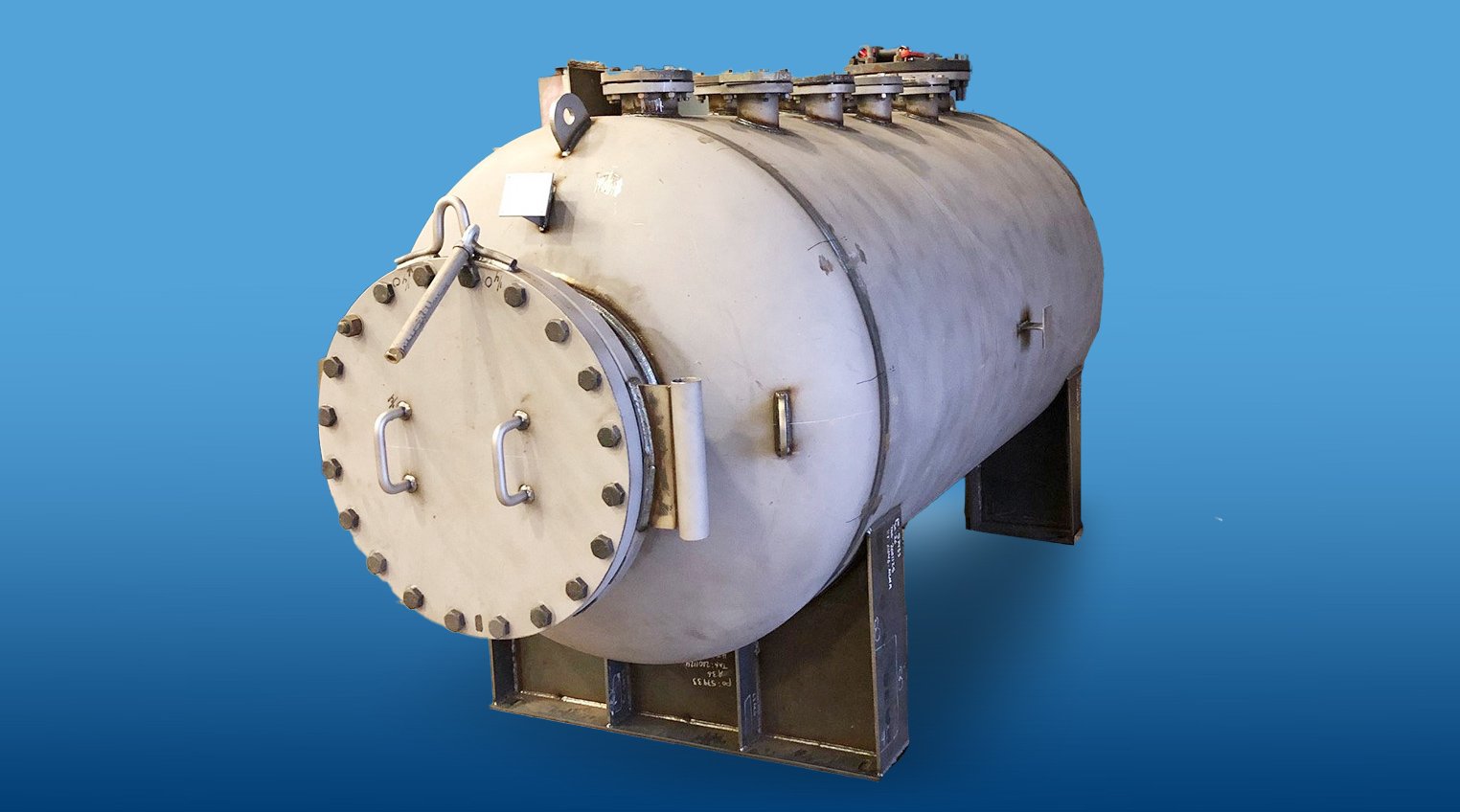Before we quote a project, we like to know find out what your needs are so we can give you the best solution possible. Below are some of the questions we ask and the reasons behind them.
What type of steel are you using? We are able to rotationally line many types of steel. Carbon steel is the most common steel used with a liner, but we have also worked on many projects with various grades of stainless or other exotic alloys. We will use this information to quote the correct steel and process conditions for the project.
Do you have a drawing of the part? Many of the questions listed below may be answered with a part drawing. Having this drawing helps us to determine size and shape and if our process is the right solution for your application.
What type of equipment is this? We are experienced in lining pipe, tanks, pressure vessels, scrubbers, fittings, pumps, valves, flowmeters, filter housings, heat exchangers, and other process equipment. Our process may vary slightly depending on the type of equipment, which would be reflected in the quote.
In what type of service is this equipment used? We will use this information to help you select the correct materials for your project, as well as tailor any assembly, tolerance, post processing to better fit your specific needs.
What are the minimum and maximum temperature and pressure requirements of the equipment? The type of material used also depends on the temperature and pressure requirements. For instance, PFA is rated up to 500°F, while HDPE is rated to 180°F.
What was the equipment last lined with and does it need to be removed? If needed, we will remove existing liners and recondition steel in preparation for the rotational lining process.
What is the current condition of the steel? If the steel is in good condition, we may be able to re-line it without an additional work. However, in some instances, we may need to repair or rework existing steel. If the steel is too damaged, we may recommend having new steel fabricated.
What is the required lining thickness? We will calculate our resin requirements based on this thickness, which directly influences the project costs. If you do not have a required lining thickness, we will recommend what is the most cost effective for your service.
What testing and inspection do you require? We can perform spark, hydro, x-ray, and other non-destructive testing to the liner. Some tests require hiring a third-party service, which is why we want to schedule it far in advance to meet your deadlines.
Do you want us to fabricate the vessel? If so, what ASME requirements do you have? Our facility is ASME certified. To reduce lead time, we are able to fabricate your equipment before lining.
What flange rating do you require? Our process is compatible with any flange rating and does not reduce the pressure capabilities of the steel. However, knowing this information up front helps us provide the most accurate quote for the project.
What are the dimensions? We are able to line vessels from 1 inch in diameter up to 10 feet in diameter, as well as straight spools as long as 20 feet in length. The shape and height of the vessel is also a factor, as there are some additional dimensional restrictions on the machines. If your project is too large, we may be able to come up with a solution that works with our process.
Do you require external coating or painting? We can apply a variety of paint and coating systems to complete projects if requested.
Do you want us to handle logistics to and/or from our facility? Do you have specific shipping instructions? We work with all major domestic and international freight carriers. If it is an international shipment, export licensing may be required, which will factor into the quote. It is also important to know if there are any packaging requirements or tagging of product. This information prepares us for ordering special packaging and staffing enough team members to fulfill those needs.
Please contact us if you have any questions or concerns about the following information.



